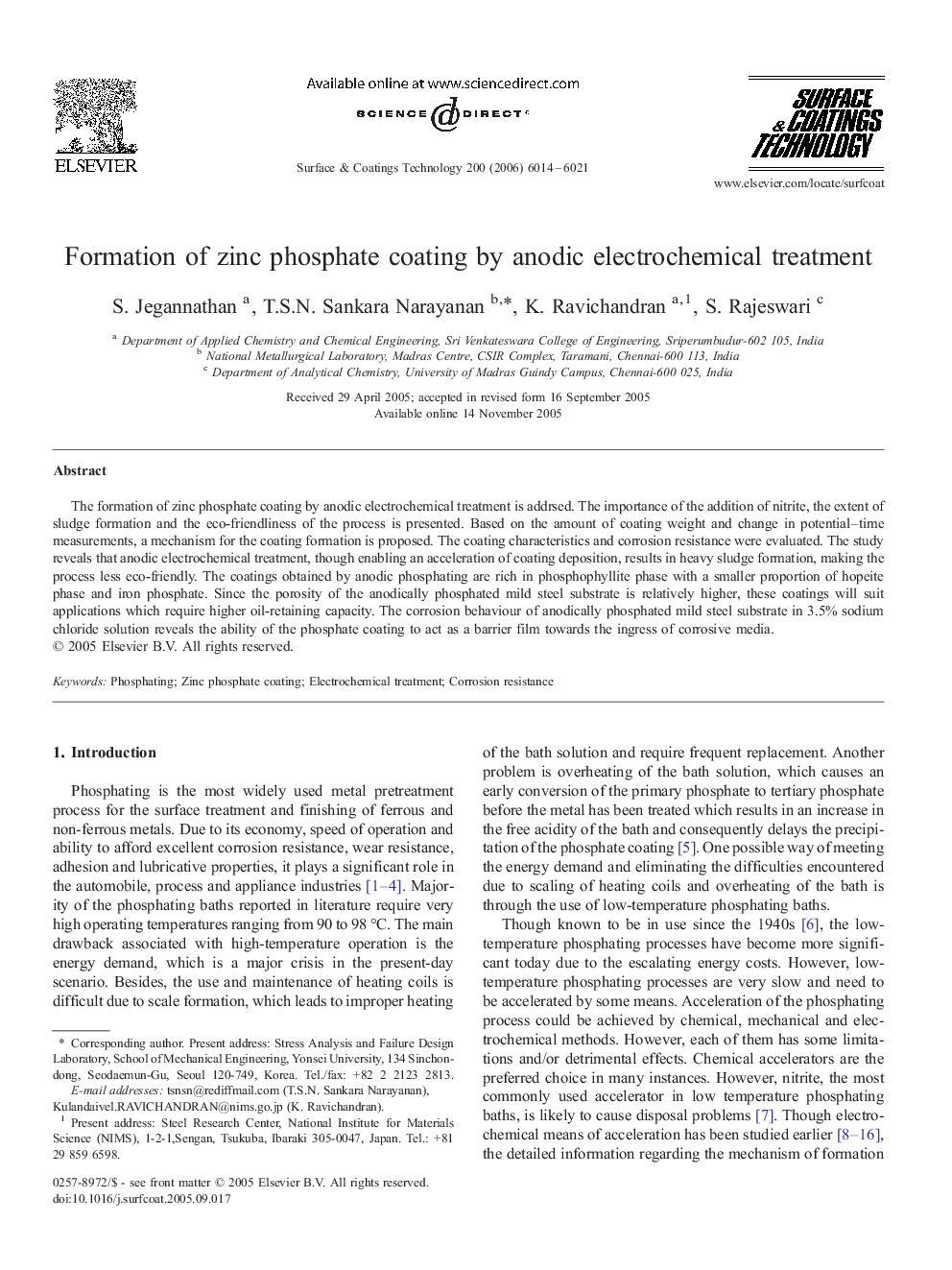| Article ID | Journal | Published Year | Pages | File Type |
|---|---|---|---|---|
| 1662227 | Surface and Coatings Technology | 2006 | 8 Pages |
The formation of zinc phosphate coating by anodic electrochemical treatment is addressed. The importance of the addition of nitrite, the extent of sludge formation and the eco-friendliness of the process is presented. Based on the amount of coating weight and change in potential–time measurements, a mechanism for the coating formation is proposed. The coating characteristics and corrosion resistance were evaluated. The study reveals that anodic electrochemical treatment, though enabling an acceleration of coating deposition, results in heavy sludge formation, making the process less eco-friendly. The coatings obtained by anodic phosphating are rich in phosphophyllite phase with a smaller proportion of hopeite phase and iron phosphate. Since the porosity of the anodically phosphated mild steel substrate is relatively higher, these coatings will suit applications which require higher oil-retaining capacity. The corrosion behaviour of anodically phosphated mild steel substrate in 3.5% sodium chloride solution reveals the ability of the phosphate coating to act as a barrier film towards the ingress of corrosive media.
